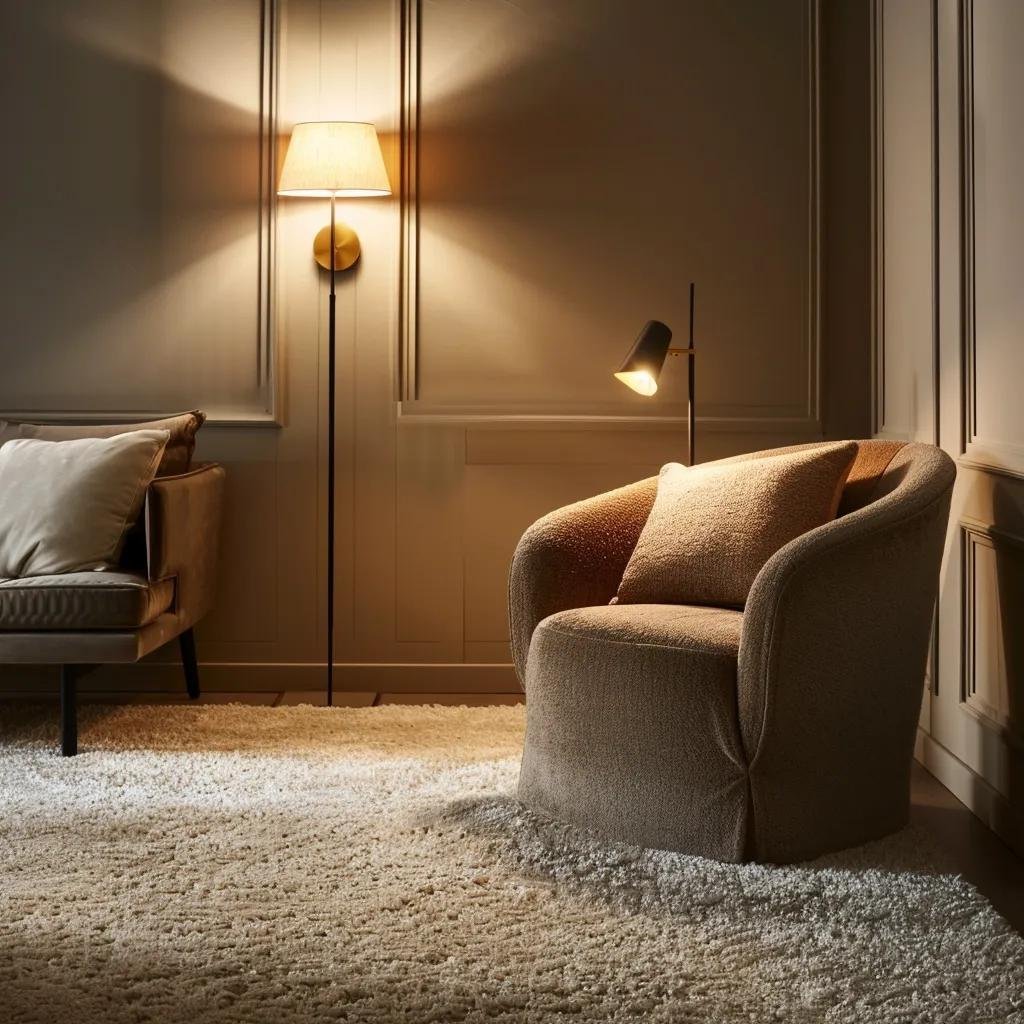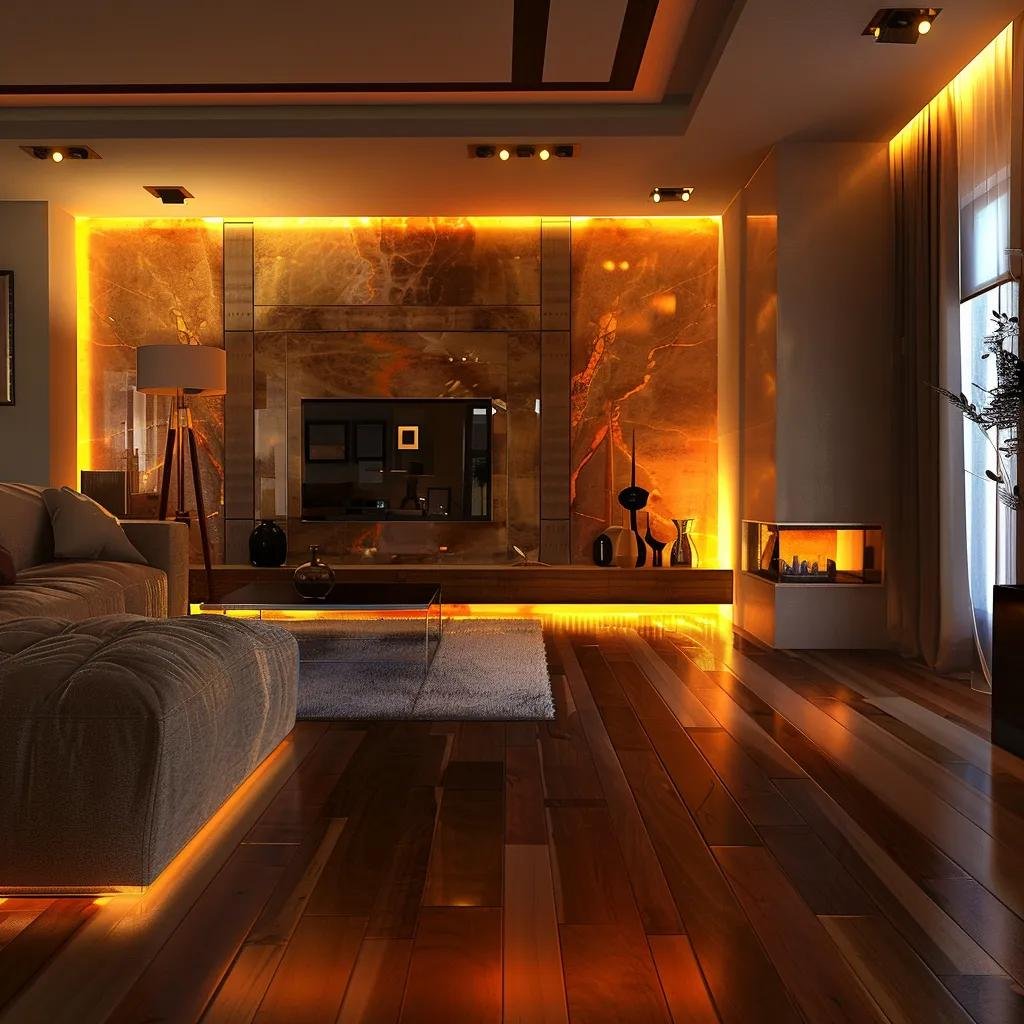“`html
Discover the Ideal Lighting for Your Flooring: Elevate Your Home’s Aesthetic
Transform your floors from mere surfaces to stunning centerpieces with the right lighting. The perfect lighting solution harmonizes color temperature, beam angle, and fixture type to enhance the texture, tone, and depth of your flooring, creating a cohesive design story. This guide delves into how lighting influences flooring aesthetics, caters to material-specific needs, and offers premium fixture and technique selections. Tailor your lighting to kitchens, bathrooms, and living spaces, integrating a holistic design approach with Scanbuild LLC’s expert insights for Washington D.C. homeowners.
Lighting’s Impact on Flooring: What You Need to Know

Lighting dramatically alters flooring perception by affecting color, grain, and sheen through variations in intensity, hue, and direction. This enhances depth and dimensionality across materials. Grasping the dynamics of natural light, artificial sources, and color temperature is crucial for selecting the best lighting for your floors.
The Role of Natural Light in Flooring Appearance
Natural light unveils the true colors of your flooring and highlights textures by shifting spectral balance throughout the day. Morning light introduces cool, blue tones that enhance neutrals and grays, while afternoon light warms wood grains and stone veining. Observing sun paths interacting with floor surfaces ensures your material choice remains visually appealing, setting the stage for controlled artificial lighting.
Artificial Lighting: Transforming Flooring Perception
This comparison illustrates how each light source either deepens wood warmth or sharpens stone definition, guiding fixture selection to match specific flooring materials.
The Importance of Color Temperature in Flooring Lighting
Color temperature dictates the visible warmth or coolness of light, directly influencing floor hue accuracy and room ambiance. A 3000K warm white enhances oak and maple grains, while a 5000K cool white brightens porcelain tile and neutral vinyl. Calibrating Kelvin values ensures consistent floor appearance under both natural and artificial conditions, paving the way for material-focused lighting choices.
Color Temperature and Flooring
Color temperature significantly impacts flooring appearance, with warmer tones (around 3000K) enhancing wood grain richness, while cooler tones (around 5000K) brighten and accentuate tile and stone details. This calibration ensures consistent floor appearance under both natural and artificial conditions.
Lighting Research Center, “Color Temperature and Lighting Design” (2022)
This research supports the article’s claims about the impact of color temperature on flooring appearance and the importance of selecting appropriate Kelvin values.
Choosing the Best Lighting for Your Flooring Materials
Enhancing Hardwood Floors: Lighting for Warmth and Grain
Hardwood floors shine under warm, directional accent lighting. A 3000K LED spotlight with a narrow beam emphasizes wood grain depth, while recessed downlights at 30° angles eliminate glare and highlight floor patterns. This approach enriches warmth and draws attention to natural variations.
Lighting Tile and Stone Floors: Highlighting Texture and Sheen
Tile and stone benefit from crisp, higher-CRI fixtures that accentuate patterns and veining. A layered strategy combining 4000K recessed lighting for ambient coverage and 3000K wall-washers for texture brings out the floor’s dimensionality.
Creating Coziness with Carpet and Rug Lighting

- Use 2700K wall sconces to cast gentle uplight that accentuates pile texture.
- Position floor lamps with diffusers to avoid harsh shadows.
- Integrate dimmable fixtures to adjust mood for relaxation.
These techniques foster a plush underfoot environment, guiding attention next to modern LVT solutions.
Enhancing Luxury Vinyl Tile (LVT) Floors with Lighting
Luxury Vinyl Tile gains realism when illuminated by daylight-balanced 5000K LEDs and narrow-beam accent lights. Highlighting grout lines with low-profile strip fixtures brings out authentic tile patterns and resilient surface characteristics.
Lighting Fixtures and Techniques to Complement Your Flooring
Lighting Fixtures and Flooring Materials
The choice of lighting fixtures and their placement is crucial for enhancing the aesthetic appeal of different flooring materials. For instance, recessed downlights can provide even illumination in open spaces, while under-cabinet LEDs offer task lighting, and floor lamps add warmth and accentuation to rugs and seating areas.
Illuminating Engineering Society, “The Lighting Handbook” (10th ed.) (2011)
This handbook provides a comprehensive overview of lighting techniques and fixture applications, which aligns with the article’s discussion on selecting the right lighting for various flooring types.
Overhead and Ambient Lighting: Impact on Floor Illumination
Overhead lighting provides broad, uniform coverage that reduces shadows and ensures safety across floor surfaces. Layering ambient fixtures like chandeliers or cove lighting balances brightness and prevents isolated glare spots.
Task and Accent Lighting: Highlighting Flooring Features
Task lighting is ideal near cabinets, islands, or built-in benches to reveal material details and prevent trip hazards. Accent lighting—spotlights or track fixtures—draws the eye to flooring transitions, mosaic inlays, or textural highlights in high-traffic zones.
Luxury Lighting Fixtures for High-End Flooring Designs
Premium fixtures from Arteriors and Louis Poulsen integrate sculptural design with optical precision, enhancing exotic hardwood, marble, and large-format tiles. Customized bronze pendants and minimalistic LED profiles serve both as statement pieces and precise floor illuminators.
Room-Specific Lighting: Enhancing Flooring in Key Home Areas
Kitchen Flooring: Combining Style and Function with Lighting
Under-cabinet strip LEDs at 3000K illuminate countertops and adjacent porcelain or wood floors without casting shadows. Pendant clusters over islands provide 5000K task brightness while highlighting floor patterns.
Creating a Spa-Like Ambiance with Bathroom Floor Lighting
Warm, recessed 2700K downlights combined with low-profile cove lighting deliver soft, reflective pools of light on marble and porcelain. Integrated toe-kick LEDs maintain subtle illumination for nighttime use.
Adding Comfort and Elegance to Living Room and Bedroom Floors
Layered ambient cove lighting, warm floor lamps, and directional art lights around rugs establish depth and coziness. Dimmable recessed fixtures adjust the mood to highlight wooden or carpeted surfaces in luxury suites.
The Importance of Integrated Lighting and Flooring Design in Luxury Home Remodeling
Improving Flooring and Lighting Cohesion with Integrated Design
Holistic planning synchronizes fixture placement with floor layout, preventing uneven brightness and glare while accentuating material transitions. This synergy enhances visual flow and fosters a unified design statement.
Personalized Lighting Consultations: Benefits for Washington D.C. Homeowners
Local consultations leverage Scanbuild LLC’s market knowledge, enabling precise assessment of natural light patterns and homeowner preferences. Custom recommendations and on-site sample testing guarantee that luxury floors always appear as intended.
Elevating flooring through intentional lighting design transforms both material and mood, ensuring each surface reflects its true beauty. By understanding the interplay of light and material, homeowners achieve lasting luxury underfoot. Partnering with a dedicated design-build firm in Washington D.C. brings expert guidance, bespoke solutions, and the confidence to illuminate your floors perfectly.
“`


Recent Comments